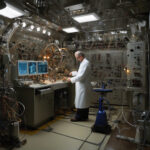How Pneumatics and Soft Robotics Drive Safer and More Versatile Collaborative Automation
In the realm of automation, advancements in technology have continuously pushed the boundaries of what is possible. One such area that is gaining significant traction is the integration of pneumatics and soft robotics. These innovative technologies are revolutionizing automation by enhancing safety measures, improving versatility, and enabling seamless collaboration between humans and machines.
Pneumatics, which utilize compressed air to create mechanical motion, have been a staple in industrial automation for decades. The simplicity, cost-effectiveness, and reliability of pneumatic systems make them ideal for a wide range of applications, from manufacturing and assembly to packaging and material handling. By harnessing the power of compressed air, pneumatics can quickly and efficiently drive actuators, grippers, and other mechanical components, providing the necessary force and precision for automated processes.
On the other hand, soft robotics represent a more recent development that is rapidly transforming the field of automation. Unlike traditional rigid robots, soft robots are made of flexible and deformable materials, allowing them to adapt to complex environments, interact safely with humans, and perform delicate tasks with precision. By mimicking the dexterity and compliance of natural organisms, soft robotics offer unique advantages in scenarios where traditional robots may struggle.
The synergy between pneumatics and soft robotics holds immense potential for revolutionizing automation in various industries. One of the key benefits is enhanced safety in collaborative workspaces. Traditional industrial robots are often caged off to prevent accidental contact with humans due to their rigid and powerful nature. In contrast, soft robots can operate alongside human workers without posing a significant risk of injury, thanks to their compliant and gentle movements. By combining soft robotic components with pneumatic actuators, companies can create collaborative automation systems that prioritize safety without sacrificing efficiency.
Moreover, the versatility of pneumatics and soft robotics opens up new possibilities for automation in dynamic and unpredictable environments. Traditional robots are typically limited to predefined tasks and sequences, requiring precise programming and calibration. In contrast, soft robots excel in unstructured settings where tasks may vary, and interactions with objects and humans need to be adaptive. By integrating soft robotic grippers with pneumatic controls, automation systems can handle a more extensive range of objects and tasks, making them ideal for industries like e-commerce fulfillment, healthcare, and agriculture.
An excellent example of the transformative power of pneumatics and soft robotics in automation is the development of collaborative robots, or cobots. These robots are specifically designed to work alongside human operators in shared workspaces, performing repetitive or physically demanding tasks to enhance productivity and ergonomics. By incorporating soft robotic arms and pneumatic actuators, cobots can provide the flexibility and safety required for close human-robot interaction, leading to improved efficiency and worker satisfaction.
As industries continue to embrace the capabilities of pneumatics and soft robotics, the future of automation looks promising. From streamlining manufacturing processes to enhancing healthcare delivery and beyond, the combined potential of these technologies is reshaping the way we think about automation. By prioritizing safety, versatility, and collaboration, companies can leverage pneumatics and soft robotics to drive innovation and stay ahead in an increasingly competitive market.
In conclusion, the integration of pneumatics and soft robotics is revolutionizing automation by enabling safer, more versatile, and collaborative systems. As technology continues to evolve, the potential applications of these innovative technologies will only continue to grow, shaping the future of automation across industries.
#Pneumatics, #SoftRobotics, #Automation, #CollaborativeRobots, #InnovationNewsNetwork












